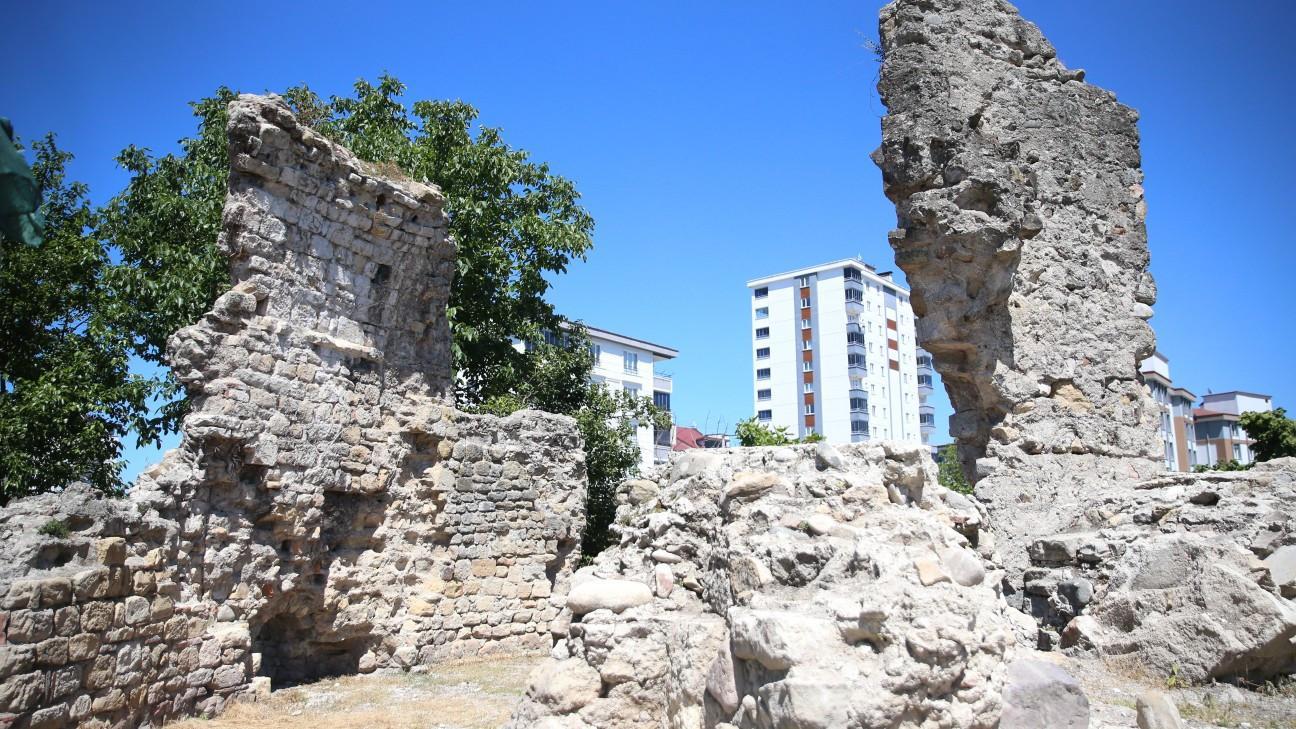
The third phase of archaeological excavations has recently begun at Saint Constantine and Helena Monastery in the northern province of Ordu’s Fatsa district, where an in-situ floor mosaic from the Byzantine period was uncovered during earlier works.
The site was first found in 2021 after historical artifacts were discovered during a road expansion project. Excavations are now being carried out under the scientific supervision of Associate Professor Seçkin Evcim from Ordu University’s Art History Department, with a 15-member team that includes archaeology students.
This season, the goal is to unearth new findings and expand the knowledge of the site's historical significance. The goal is to fully uncover the remains of the monastery and restore the structure for future generations. Authorities also hope to open the site to tourism.
Ordu Provincial Director of Culture and Tourism Uğur Toparlak stated that the monastery is one of three active archaeological excavations in the city. He said the work began after artifacts were unearthed during infrastructure work and that excavations have been continuing since then.
According to Toparlak, multiple artifacts have already been brought to light and the removal of debris is ongoing. He added that they expect to discover more historical objects once they reach the lower levels of the site.
“We hope to uncover more of the in-situ Byzantine mosaic found last year,” Toparlak said. “Many artifacts will be brought to light here. We also plan to begin restoration of the monastery in a way that preserves its original form.”
He stated that ongoing research and exploratory drilling in other parts of the site may reveal new structures and artifacts. “If we identify additional architectural elements, we will expand the excavation area accordingly,” he said.
Toparlak shared details about the unique characteristics of the monastery: “This is an octagonal structure from the Byzantine period. There are very few similar examples in the world, and one of them is right here in Ordu. That makes this a highly valuable site. We still have a lot of work to do, but we hope to achieve promising results this season.”
Artifacts recovered from the site are expected to be displayed in the future Ordu Museum, alongside findings from other regional digs. Once the site is opened to visitors, local and international tourists will be able to visit the monastery, located just 200 meters from the Black Sea coastal highway.
Toparlak also mentioned ongoing excavations at Kurul Fortress and Fatsa Cıngırt Fortress, adding, “Ordu’s historical significance has transformed as a result of these excavations. We are uncovering previously unknown layers of the city’s past and ancient heritage. Our goal is to make the most of this potential for the benefit of Ordu.”
Evcim highlighted the rarity of octagonal religious structures from the Byzantine era, particularly in Anatolia. “Very few examples of such architecture have survived to the present day. This excavation is a significant opportunity to study one,” he said.
Evcim estimated that work will continue on the site for at least three more excavation seasons, followed by structural reinforcement and restoration efforts.